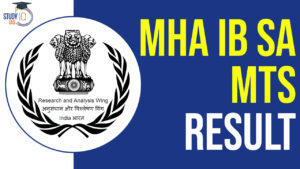Daily Current Affairs for UPSC 2023
Q) Recently seen in news, the ‘World Water Development Report, 2023’, was released by which one of the following organizations?
- World Water Council
- Global Water Partnership
- United Nations-Water
- United Nations Educational, Scientific and Cultural Organization
Daily Current Affairs for UPSC – 24 March 2023
Explanation:
- Option (4) is correct: The ‘United Nations World Water Development Report 2023: partnerships and cooperation for water’, has been published by UNESCO. As per the report, the urban population facing water scarcity in the world is expected to double from 930 million in 2016 to between 1.7 and 2.4 billion people, in 2050. India will be most severely affected as the global urban population facing water scarcity is projected to rise in upcoming decades. Majority of the demand is concentrated in middle- and lower-income countries, particularly in emerging economies. Two billion people across the globe do not have safe drinking water and 3.6 billion lack access to safe sanitation. As a result of excessive demand, seasonal water scarcity will increase in areas where it is currently abundant and worsen in areas where water is already in shortage. The rising cases of extreme and prolonged droughts are also stressing ecosystems, with dire consequences for both animal and plant species.
Q) Consider the following statements about the Unlawful Activities Prevention Act (UAPA), 1967:
- Under the act, the Director General of the National Investigation Agency can approve the seizure of property of an accused at the stage of investigation.
- Under the UAPA, being a member of a banned association does not constitute an offence.
- As per the act the, unlawful activities referred to actions which are solely related to secession and cession of territory.
Which of the statements given above is/are correct?
- 1 only
- 1 and 2 only
- 2 and 3 only
- 1, 2 and 3
Explanation:
- Statement 1 is correct: Unlawful Activities (Prevention) Act 1967 empowers the central government to declare an association as unlawful if it believes that the association is involved in unlawful activities that threaten the sovereignty, unity, and integrity of India. It requires the court to provide an opportunity to the public prosecutor to oppose the bail application and to not release the accused on bail if there are reasonable grounds for believing that the accusation is prima facie true. The Act empowers the Director General of National Investigation Agency (NIA) to grant approval of seizure or attachment of property when the case is investigated by the said agency. The Act empowers the officers of the NIA, of the rank of Inspector or above, to investigate cases of terrorism in addition to those conducted by the DSP or ACP or above rank officer in the state.
- Statement 2 is incorrect: A three-judge bench of the Supreme Court ruled that even a mere membership of a banned association is sufficient to constitute an offence under the Unlawful Activities (Prevention) Act 1967. The court upheld the constitutional validity of Section 10(a)(i) of the UAPA and said that the provision is in consonance with the fundamental right to free speech. If an association is declared unlawful under the UAPA and a person remains a member of that association, they can be punished with up to two years in prison and a fine.
- Statement 3 is incorrect: Under UAPA, both Indian and foreign nationals can be charged. It will be applicable to the offenders in the same manner, even if crime is committed on a foreign land, outside India. The 2004 amendment, added “terrorist act” to the list of offences to ban organizations for terrorist activities. Till 2004, “unlawful” activities referred to actions related to secession and cession of territory. 2019 Amendment Act allows the government to label people as terrorists if they commit or participate in terrorist acts, plan terrorist attacks, promote terrorism, or are otherwise involved in terrorism.
Q) With reference to Khandagiri and Udaygiri caves, consider the following statements:
- They were built by King Ashoka after the Kalinga War.
- The significance of Jainism in Odisha’s history is demonstrated through these caves.
- The sculptures in the caves are only related to deities and religious observances.
Which of the statements given above is/are correct?
- 1 and 2 only
- 2 and 3 only
- 3 only
- 1, 2 and 3
Explanation:
- Statement 1 is incorrect: Udayagiri and Khandagiri caves are located in the outskirts of Bhubaneswar, Odisha. Out of these 33 caves, 15 are situated in the Khandagiri Hills while 18 of them are located in the Udayagiri Hills. These twin caves are located on the two adjacent hills, which are part of the Kumari Mountain range. These caverns were made somewhere around the 1st and 2nd Century BC under the commission of King Kharavela of the Mahameghavahana dynasty that ruled Odisha (erstwhile Kalinga) during that time.
- Statement 2 is correct: The rock cut caves were built for the Jain monks to provide them a place to rest and meditate. The multi-layered rock-cut caves illustrate the importance of Jainism in the history of Odisha. As per the Jain tradition, Mahavira (24thTirthankara) came to the Kumari Mountain and preached his doctrines.
- Statement 3 is correct: The Archaeological Survey of India (ASI) has warned that the Khandagiri and Udaygiri caves in Bhubaneswar are eroding at a rapid pace. Caves have sculptures only related to deities, religious observances and historical episodes. Architecture and intricate sculptures on the walls of these caves depict several stories from mythology and history. Inscriptions carved include Hathi Gumpha, Mancapuri and Sarpa Gumpha.
Q) Consider the following statements about conservation of tigers:
- In India, nearly all of the tiger reserves have been awarded international Conservation Assured/Tiger Standards (CA/TS) accreditation.
- Project tiger is a centrally sector scheme whereby the central government provides financial assistance to states for in-situ conservation of tigers.
Which of the statements given above is/are not correct?
- 1 only
- 2 only
- Both 1 and 2
- Neither 1 nor 2
Explanation:
- Statement 1 is incorrect: India achieved the targets set under TX2 initiative in 2018 (4 years in advance). Tx2 is the global goal to double the number of wild tigers by the year 2022. It was adopted in 2010 at the St. Petersburg Tiger Summit by 13 tiger range countries. 14 Tiger Reserves in India have been awarded with international Conservation Assured | Tiger Standards (CA|TS) accreditation. CA|TS are globally accepted conservation tool that sets best practices and standards to manage tigers and encourages assessments to benchmark progress.
- Statement 2 is incorrect: Project Tiger was launched in 1973 from the Jim Corbett National Park in Uttarakhand. It is a Centrally Sponsored Scheme of the Ministry of Environment, Forests and Climate Change. It was initially launched in 9 Tiger reserves (TRs) in different states of India. It aims to ensure the survival and maintenance of the tiger population in specially constituted Tiger reserves throughout India. It provides central assistance to tiger range States for in-situ conservation of tigers in designated tiger reserves. National Tiger Conservation Authority (NTCA) was established through Wild Life (Protection) Amendment Act, 2006 to provide statutory authority to Project Tiger. Centre provides financial assistance to States of 60% and 50% for expenditure on all non-recurring items and expenditure on recurring items respectively. North Eastern and Himalayan States are provided 90% central assistance in both cases.
Q) With reference to ‘Parole and Furlough’, consider the following statements:
- Parole is a matter of right of a prisoner in cases of long-term imprisonment
- Furlough is a conditional release of a prisoner usually on the basis of his behavior.
- The Prisoners Act of 1894 governs provisions related to both parole and furlough.
Which of the statements given above is/are correct?
- 1 and 2 only
- 2 and 3 only
- 3 only
- 1, 2 and 3
Explanation:
- Statement 1 is incorrect: Parole is a system of releasing a prisoner with suspension of the sentence. The release is conditional, usually subject to behaviour, and requires periodic reporting to the authorities for a set period of time. Parole is not a right, and is given to a prisoner for a specific reason, such as a death in the family or a wedding of a blood relative. It may be denied to a prisoner even when he makes out a sufficient case, if the competent authority is satisfied that releasing the convict would not be in the interest of society. Since prisons are a State subject under 7th Schedule of the Constitution, each State Government makes its own Prison Rules.
- Statement 2 is incorrect: Furlough is given in cases of long-term imprisonment. The period of furlough granted to a prisoner is treated as remission of his sentence. It is seen as a matter of right for a prisoner, to be granted periodically irrespective of any reason, and merely to enable the prisoner to retain family and social ties, and to counter the ill-effects of prolonged time spent in prison.
- Statement 3 is correct: Parole and furlough are both forms of conditional release. Parole can be awarded in the case of short-term detention, whereas furlough is allowed in the case of long-term detention. Parole lasts for one month, whereas furlough is generally granted for a maximum of 14 days. Both parole and furlough are considered as reformative processes. These provisions were introduced with a view to humanize the prison system. Parole and furlough are covered under the Prisons Act of 1894.


 SSC Stenographer 2024 Notification Out a...
SSC Stenographer 2024 Notification Out a...
 IB SA MTS Final Result 2024 Out at mha.g...
IB SA MTS Final Result 2024 Out at mha.g...
 Model Skill Loan Scheme, Eligibility, Re...
Model Skill Loan Scheme, Eligibility, Re...

















